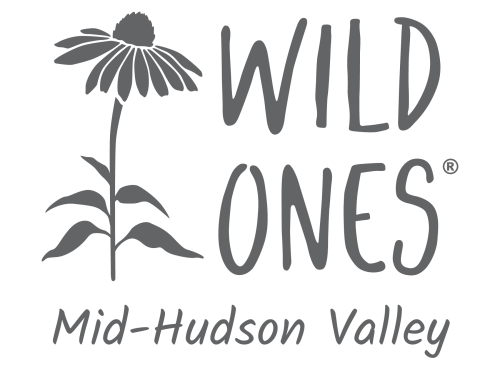Current Blooms & Seed Collection Tips
by Logan Fisher
We are well into spring, despite winter’s icy grip still lingering! As you may have noticed driving down the road, Red Maples are tinting the hills with the first signs of life. Beneath the tree canopies in lowland areas, Spicebush is lighting up the once dark and dense woodland floor. Willows have started to flower and leaf — New York is home to around 15 native willow species, the earliest of which (Pussy Willow) is now making its appearance. Ferns are beginning their ascent, intermingling with delicate forbs such as Dutchman’s Breeches and violets. As spring unfurls, we’d like to highlight what’s currently blooming and when to expect their seed collection windows.
- Pussy Willow – Salix discolor
A classic sign of early spring, Pussy Willow is one of the first woody plants to flower in the northeast. These native shrubs are vital early bloomers, offering pollen to emerging bees and other insects before many plants leaf out.
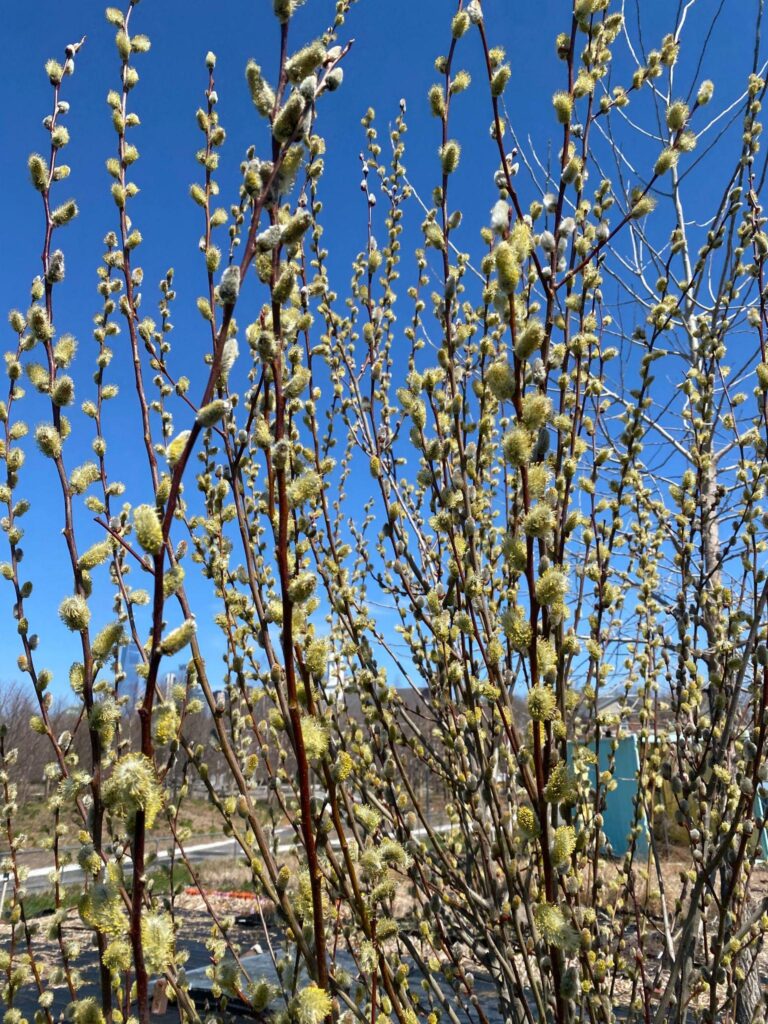
- Bloom timing: Late March through April.
- Seed collection: Seeds follow shortly after flowering and are typically ready late April into May, depending on the season.
- Signs of maturity: Small, fuzzy seed capsules split open to release fluffy seeds — similar to dandelion fluff. Collect just before the capsules fully open to avoid losing them to wind dispersal.
- Collection tips: Snip off maturing capsules and place in a paper bag to allow them to dry and release seeds indoors.
- Viability: Seeds of many willows (including Pussy Willow) are short-lived and best sown fresh, ideally within a week or two of collection. Refrigeration can slightly extend viability but not by much.
- Habitat: Willows prefer moist soils and are commonly found along streams, wetlands, or low-lying forest edges.
- Dutchman’s Breeches – Dicentra cucullaria
A true spring woodland ephemeral, this stunning little plant is one of the earliest (and bravest) here in the northeast. Providing a very early source of food for awakening bumblebee queens, this species holds important ecological value in woodland habitats.
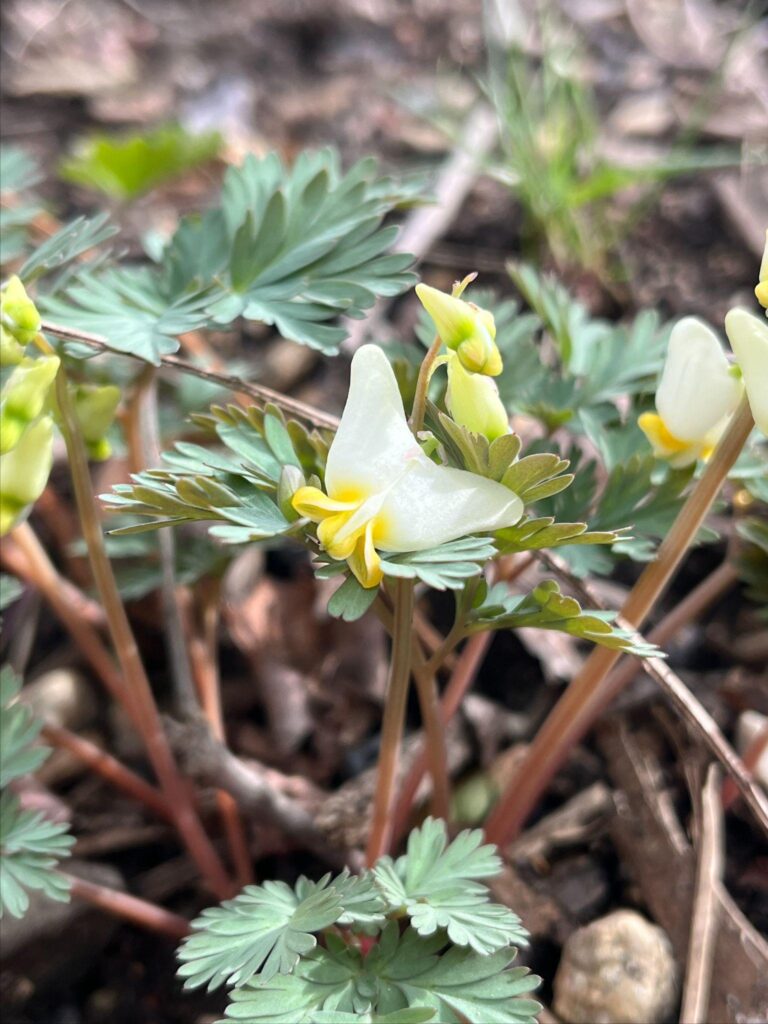
- Bloom timing: Early to late spring, from now through late May.
- Seed collection: Seeds ripen quickly after flowering around 4–6 weeks after bloom.
- Signs of maturity: Seeds form in green, bean-like pods that swell and turn yellow or brown. Pods split open suddenly when fully ripe, so it’s important to harvest them just before dehiscence.
- Collection tips: Gently pinch off drying pods — gloves recommended, as the plant can be an irritant to some people.
- Seed dispersal: Seeds have elaiosomes — fatty structures that attract ants for natural dispersal.
- Viability: Best sown fresh; they lose viability quickly when stored dry.
- Germination: Slow-growing and may take 1–2 years to germinate — a patience plant!
- Common Blue Violet – Viola sororia
An exciting spring sight and resilient groundcover, this native violet is often overlooked but incredibly important for early pollinators and as a host plant for fritillary butterfly larvae. Found in lawns, forest edges, and moist meadows, it spreads easily by seed and rhizome.
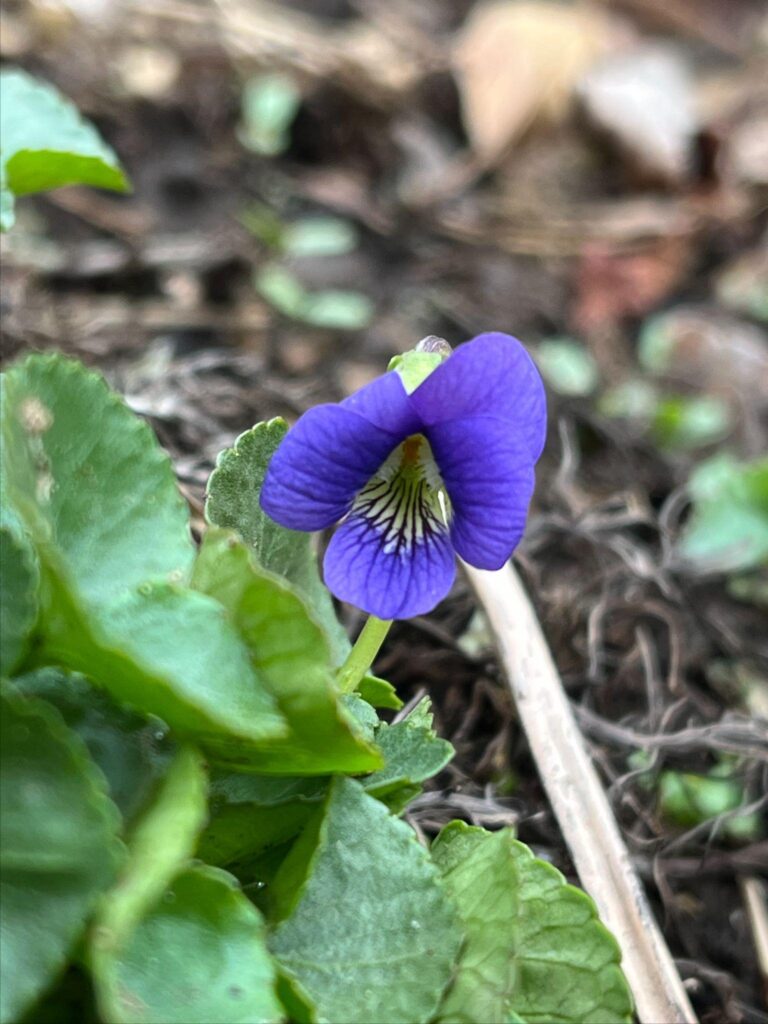
- Bloom timing: Mid-April to early June, depending on site conditions.
- Seed collection: Seeds mature 4–6 weeks after flowering, usually by late May to early July.
- Signs of maturity: Small, oval capsules appear where flowers once were. As they ripen, they turn pale and eventually split into three segments that fling seeds away.
- Collection tips: Harvest seed capsules just before they split open. You can bag ripening seed heads or collect daily to avoid losing them.
- Seed dispersal: Like Dutchman’s Breeches, violet seeds have elaiosomes and are dispersed by ants.
- Viability: Sow fresh if possible, though violets have a bit more storage tolerance than some ephemerals.
- Germination: Can be erratic and may require moist chilling (cold stratification) to break dormancy.
4. Red Maple – Acer rubrum
A signature of early spring in the northeast, Red Maple is often one of the first trees to bloom—its red buds lighting up hillsides and forest edges even before its leaves appear. It’s a critical early-season resource for native pollinators like bees and flies, and it’s also one of the most adaptable tree species in the eastern U.S.
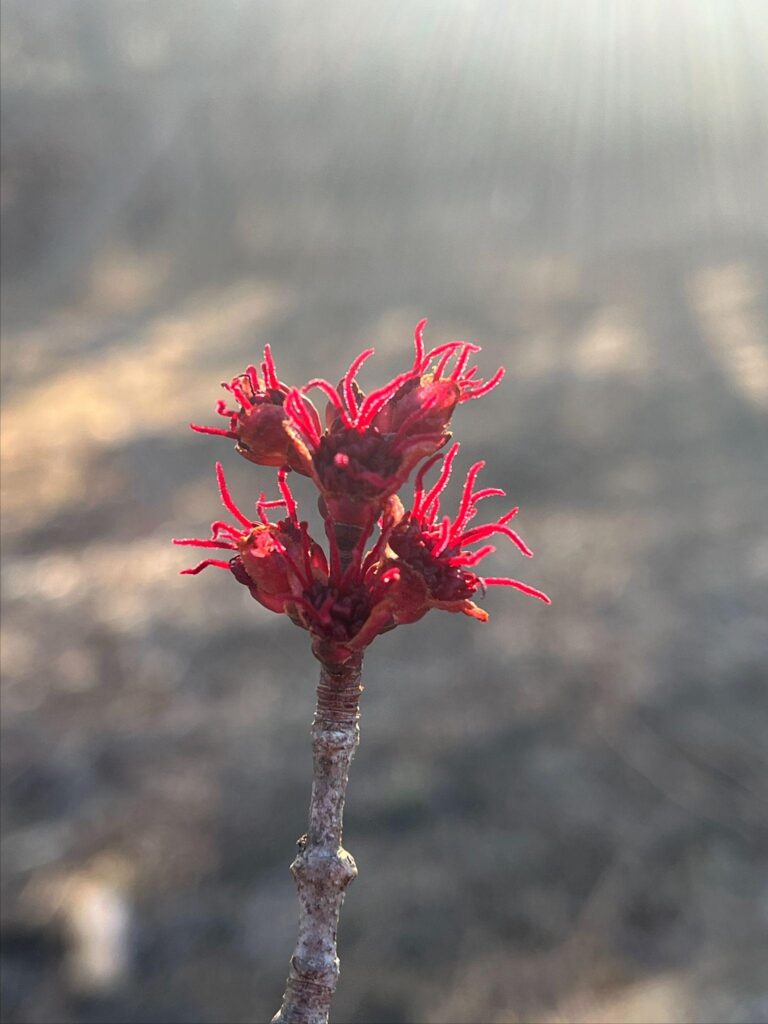
● Bloom timing: Early March to April, depending on elevation and exposure.
● Seed collection: Seeds (technically called samaras, or winged seeds) mature rapidly—often within 4–6 weeks after flowering. In most areas, they are ready to collect by late April through May.
● Signs of maturity: Samaras are initially green, turning reddish or light brown as they ripen. They’re ready when they start to detach and fall easily with a light shake.
● Collection tips: Gather directly from the tree or from freshly fallen samaras on the ground. Avoid collecting if they’ve been sitting on wet ground too long.
● Viability: Very short-lived when dry—best sown fresh or stored in moist conditions and refrigerated for short periods.
● Germination: Red Maple seeds do not require cold stratification if sown fresh—they’re among the few tree species in our region that germinate immediately after dispersal. With consistent moisture and warmth, germination can occur in 1–2 weeks.
● Habitat note: Found in a wide variety of habitats from wetlands to upland forests—part of what makes them such a dominant and common species.
- Spicebush – Lindera benzoin
Spicebush lights up moist woodland understories with its golden-yellow flowers, often before its leaves emerge. Its spicy, citrusy scent (from crushed leaves or twigs) gives it its name. This shrub is a host plant for the Spicebush Swallowtail butterfly and offers food to early pollinators as well as birds later in the season.
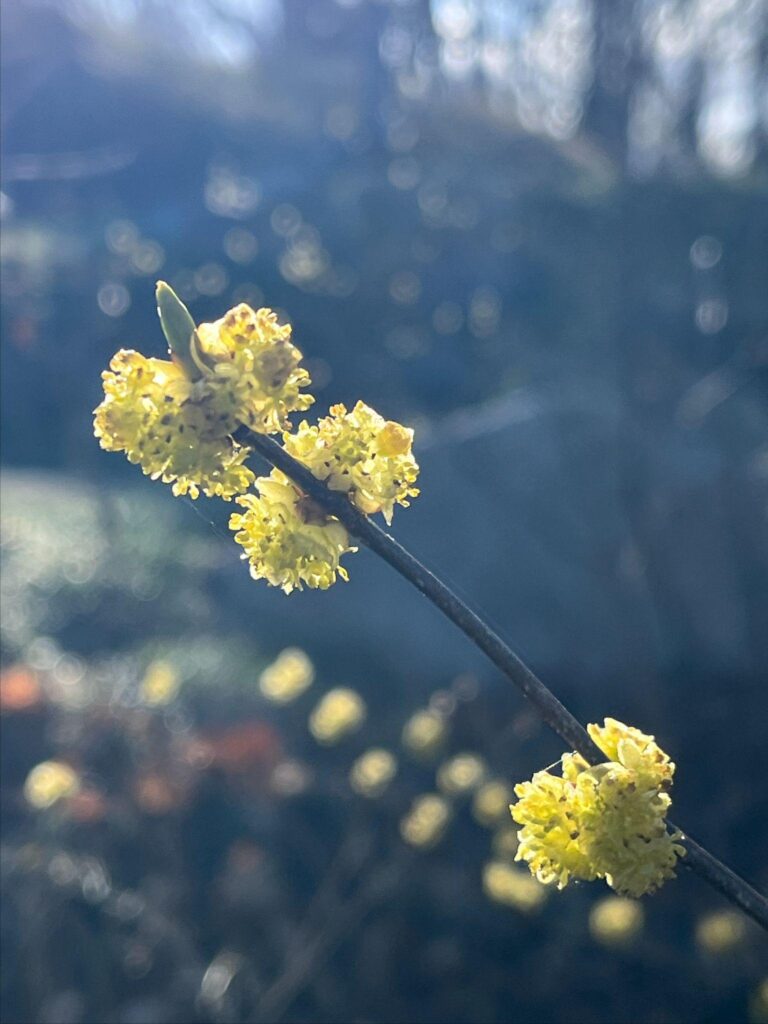
- Bloom timing: Late March to early May, depending on site conditions. Flowers appear in clusters on bare twigs before leaf-out.
- Seed collection: Only female plants produce fruit—round green drupes that ripen to a bright red by late summer to early fall (usually August to September).
- Signs of maturity: Fruits turn fully red and slightly soft when ripe. They detach easily from the stem with a gentle tug.
- Collection tips: Collect directly from the shrub, ideally when the fruits are fully red but not yet dropping. Remove the outer red flesh (which can be used as a spice!) to access the seed inside.
- Viability & sowing: Seeds require cold stratification to germinate. Best sown fresh in fall or stratified for 3–4 months in moist conditions in the refrigerator before spring sowing.
- Germination: Expect germination in late spring or early summer after stratification.
- Habitat note: Grows best in moist, rich woods and shaded edges. Often found along streambanks or in floodplain forests. A foundational species for woodland restoration.

Author Logan Fisher is a seasoned horticulturist specializing in ecological gardening. He works as a Field Operations Manager with Larry Weaner Landscape Associates. He is also the co-founder of Flosagri, a new backyard-style native plant nursery based in Cold Spring, NY. Find out more about Logan and his work at www.flosagri.com
